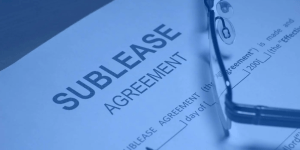When a repair is needed in a rental unit, understanding tenant rights in Ontario for repairs is essential for a smooth and fair process. This guide provides a detailed look at the legal framework governing maintenance in the province, offering crucial information for both tenants and landlords. The goal is to empower tenants by outlining their legal protections and to provide landlords with a clear understanding of their obligations under Ontario law.
The Foundation of Tenant Rights: The Landlord’s Duty to Repair
The cornerstone of tenant rights Ontario repairs is the landlord’s legal duty to maintain the rental property. According to the Residential Tenancies Act, 2006 (RTA), specifically Section 20(1), a landlord must “provide and maintain a residential complex, including the rental units in it, in a good state of repair and fit for habitation.”
This means a landlord is responsible for a wide range of repairs, including:
- Structural elements: Walls, roofs, and foundations must be kept in good condition.
- Essential services and systems: Plumbing, electrical, heating, and other critical systems must be functional.
- Appliances: Any appliances included in the lease, such as a stove or refrigerator, must be maintained.
- Common areas: Hallways, stairwells, and other shared spaces must be kept clean and in good repair.
- Vital services: The landlord cannot cut off vital services like heat, electricity, or water.
This obligation exists regardless of what is written in a lease agreement and even if a tenant was aware of a problem before moving in.
Tenant Responsibilities and the Importance of Documentation
While the landlord is responsible for most repairs, tenants also have obligations. A tenant is responsible for:
- Reporting the problem: Promptly notifying the landlord of any needed repairs is a key tenant responsibility.
- Damage they cause: Repairing or paying for damage they, their guests, or other occupants cause, excluding normal wear and tear.
- General cleanliness: Maintaining a normal standard of cleanliness in the rental unit.
When a tenant discovers a repair issue, the most important first step is to document the problem and notify the landlord in writing. This includes sending an email or a formal letter detailing the issue and keeping a copy for a personal file. This written record is the foundation of any future action a tenant might need to take regarding tenant rights Ontario repairs.
The Right to Privacy During a Repair
Even when a repair is necessary, a tenant’s right to privacy is protected. A landlord’s right of entry is governed by Section 27 of the RTA. In most non-emergency situations, a landlord must provide a tenant with at least 24 hours of written notice before entering the rental unit.
The notice must clearly state:
- The reason for the entry.
- The date of the entry.
- A time between 8:00 a.m. and 8:00 p.m.
An exception is made for genuine emergencies, such as a fire or a major flood, where a landlord may enter without notice.
Paying for a Hotel During Repairs
In Ontario, a landlord is not legally required to pay for a hotel during repairs. However, if a unit becomes uninhabitable due to the landlord’s negligence or a lack of essential services, a tenant can seek compensation from the Landlord and Tenant Board (LTB). The LTB can order a rent abatement for the days the unit was uninhabitable, which can help offset the cost of temporary accommodation. Tenants should also check their own insurance policies, as many include coverage for “additional living expenses.”
Timeframe for Repairs
In Ontario, a landlord must complete repairs within a “reasonable time.” What is considered “reasonable” depends entirely on the situation. For urgent issues that affect health, safety, or vital services (e.g., heat in winter), the expectation is for immediate action. For less critical problems, the timeframe is more flexible. The key is for landlords to show they are actively working to resolve the issue and for tenants to communicate and document all interactions.
What Happens When a Landlord Fails to Make Repairs?
If a landlord ignores a repair request, a tenant’s legal options are central to tenant rights Ontario repairs. A tenant has several recourse options:
- Contact a Municipal Inspector: Many cities and towns have property standards departments that can inspect a property and issue a work order to the landlord, requiring them to complete the repairs by a specific deadline.
- Contact the Rental Housing Enforcement Unit (RHEU): This government unit investigates serious offenses under the RTA, such as a landlord illegally cutting off vital services.
- Apply to the Landlord and Tenant Board (LTB): The LTB is the official body for resolving disputes. A tenant can file a Tenant Application About Maintenance (Form T6) to have a hearing and seek a legal remedy.
A Crucial Reminder: Do Not Withhold Rent
It is critical to understand that a tenant should not withhold rent due to a lack of repairs. While it may seem like a logical response, the RTA does not permit this. A landlord can file an application to evict a tenant for non-payment of rent, even if the landlord is in breach of their own maintenance obligations. The only legal way to receive a rent reduction or abatement for a repair issue is through an order from the LTB.
Remedies for Tenants from the Landlord and Tenant Board
If a tenant’s application to the LTB is successful, the Board has the authority to issue several orders to uphold tenant rights Ontario repairs. These remedies include:
- Ordering the landlord to complete the repairs.
- Granting a rent abatement for the period the problems existed.
- Ordering the landlord to pay for damages to a tenant’s property.
- Authorizing the tenant to perform the repair and ordering the landlord to reimburse them for the cost.
Important Legal Resources for Ontario Tenants and Landlords
To ensure compliance and a fair process, it is recommended to consult these official resources:
- The Residential Tenancies Act, 2006: This is the primary legislation outlining the legal framework for all residential tenancies.
- Landlord and Tenant Board (LTB) Forms: All LTB forms, including the essential Tenant Application About Maintenance (T6), are available here.
- Community Legal Education Ontario (CLEO): A valuable source of clear, accessible legal information for tenants.
- Steps to Justice: A resource that provides step-by-step guidance on how to handle common legal issues, including those related to tenant rights Ontario repairs.
By understanding these rights and responsibilities, both tenants and landlords can navigate the repair process with confidence, promoting a safe and well-maintained living environment.




